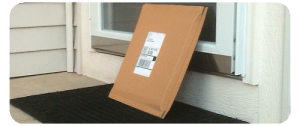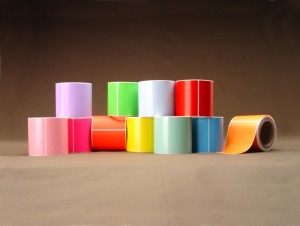
***Updated 7-2-18***
Everyone needs packaging labels, but no one thinks about them.
 Think about the last package you received. Most likely, there was a packaging label on the box. It probably had a label on the product itself, like a UPC code. It probably had a packing list, as well as some other identifying information within the box. Packaging labels are everywhere, on everything we purchase.
Think about the last package you received. Most likely, there was a packaging label on the box. It probably had a label on the product itself, like a UPC code. It probably had a packing list, as well as some other identifying information within the box. Packaging labels are everywhere, on everything we purchase.
There's a wide variety of types, adhesive types, and industries using labels on their packaging. If you're not thinking about them, you could also be missing out on a chance to market your brand.
Packaging Labels: Types
Thermal Transfer: This process will yield superior resolution of bar codes text and graphics while still maintaining excellent durability such as UV and chemical resistance. This label is ideal form product identification, drum warnings, apparel, electronics, and CD labeling.
Direct Thermal: This process is best for short-term labeling applications; those that usually last less than a year. No ribbon is required. Idea applications include: retail weigh scale, parcel tracking, travel bag tags, and industrial bar code labeling.
Laser Cut Sheets: this product is used in ink-jet and high speed printers for high resolution printing. Ideal applications include: prescription, shelf marking, promotional and auto window labeling.
Thermal Transfer Ribbons: Are designed to be used in the production of Thermal Transfer Labels. They are available in wax, wax/resin, and resin for different applications. These allow for unbeatable edge definition with improved bar code scan rates and print at high specs of up to 12ips.
Integrated Labels: Are combination laser sheet and label form and are designed for laser and ink-jet printing applications. Ideal applications include order fulfillment, pick/pack lists, return merchandise, and prescription labeling.
Digital: are designed for short and medium run full color applications and eliminate the need for printing plates. They have excellent flexibility for multiple lots variable information. The ideal application is for food and beverage, health and beauty, retail, one to one marketing, and prototyping.
Adhesive Types
Pressure Sensitive Adhesive (PSA): provides instant adhesion to various surfaces and requires minimal pressure to stick to a surface.
Permanent Adhesive: most common adhesive, once applied it cannot be removed without being destroyed.
Removable Adhesive: this type is recommended when a label has a short term life or is applied to a surface that could be damaged by the adhesive. In most cases they can be removed and repositioned without any damage to the label.
All Temp/Freezer: a special adhesive that can be applied to surfaces at temperatures as low as -20° F
Aggressive Adhesive: is a highly aggressive permanent adhesive designed specifically for rubber base applications and has very high shear and ultimate adhesion.
Industries using packaging labels
Automotive: the automotive industry is made up of a large supply chain of companies that provide parts and components to manufacturers. Many automotive packaging labels must withstand demanding environments where temperature extremes and exposure to brake fluid, engine oil and repeated washing can degrade printed information and adhesives.
Transportation and Logistics: most are used for shipping, inventory and asset tracking and container and content identification. Color LPN labels (License Plate Number labels) are often used for quick identification in warehousing for lot separation.
- Packages
- Color Coded Warehouse labeling
- LPN (License Plate Number)
- Pallets
- Racks
- Totes and Bins
- UPC and Outer Cartons
- Integrated
Consumer Durables: includes appliances, home and office furnishings, lawn and garden equipment, consumer electronics, small tool manufacturers, and sporting goods.
Retail: Most every product purchased carries a UPC code label (Universal Price Code). Many items also carry a QR (Quick Response) code to give added information about the product, sale information or a link to a retailers’ website. Retail labels define the product image and brand and are vital in conveying the message to the consumer to engage and move the consumer to purchase.
Food and Beverage: packaging labels in the food and beverage sector utilize a wide variety of materials and adhesives which are dependent on many factors. Annual US food production is expanding and animal food production was at a record high level at the end of 2013. The beverage production market is at an all-time high and projected to continue to increase through the coming year.
IPS Packaging Labels
We supply numerous type of packaging labels depending on your application. As you've learned, they provide multiple uses and be another source of brand recognition.
You may find these other articles helpful:
*Editor's note. This post was originally published on May 17, 2016 and has been updated with the most up to date content.
Follow our Knowledge Base for the latest blogs on packaging supplies, equipment, case studies, and more ways to save money.
Follow us on LinkedIn, Twitter, and Facebook and click those share buttons below if this post helped you.










